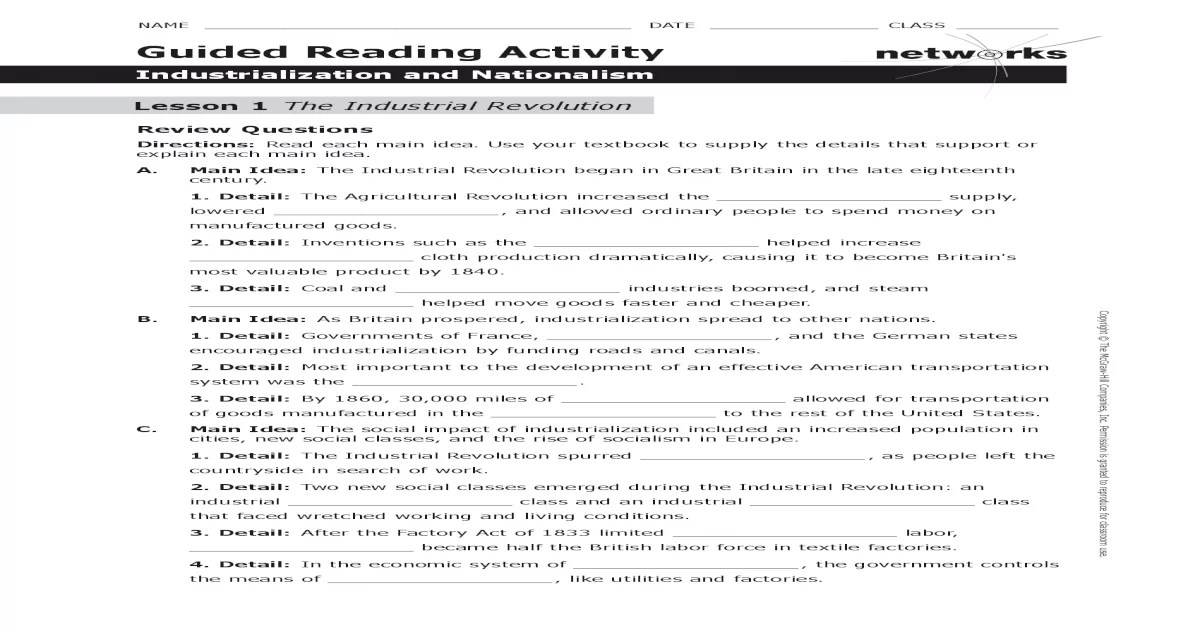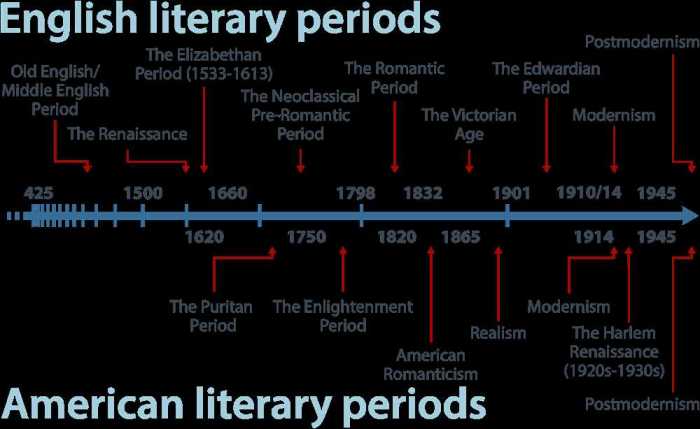Guided reading activity industrialization 1865 to 1901 answers – Embark on a guided reading journey through the transformative era of industrialization from 1865 to 1901. This activity delves into the pivotal events, technological advancements, and societal shifts that shaped this period, providing a comprehensive understanding of its profound impact on the modern world.
Prepare to engage with primary and secondary sources, analyze historical perspectives, and explore the far-reaching consequences of industrialization. This guided reading experience promises to illuminate the complexities of this pivotal era, fostering critical thinking and a deeper appreciation for the forces that have shaped our present.
Historical Context of Industrialization (1865-1901)

The period from 1865 to 1901 marked a pivotal era of industrialization, characterized by significant events and technological advancements. The end of the Civil War in the United States paved the way for a surge in economic growth, while the completion of the transcontinental railroad in 1869 facilitated the transportation of goods and people across the nation.
Simultaneously, Europe was undergoing its own industrial revolution, with countries like Germany and Great Britain leading the way in technological innovation.
Major Industries
During this period, several major industries emerged, transforming the economic landscape. The iron and steel industry flourished, providing the materials for railroads, bridges, and other infrastructure projects. The textile industry expanded rapidly, fueled by the invention of the power loom and the demand for clothing from a growing population.
The petroleum industry also gained prominence, with the discovery of oil reserves in Pennsylvania and the development of the internal combustion engine.
Guided Reading Activity Design
To implement a guided reading activity on industrialization, follow these steps:
- Select Appropriate Texts:Choose primary and secondary sources that provide diverse perspectives on industrialization. Include historical documents, newspaper articles, and academic studies.
- Prepare Students:Introduce students to the topic by providing a brief overview of industrialization and its significance. Set clear learning objectives and discuss the key concepts they should focus on while reading.
- Facilitate Discussions:Divide students into small groups and assign each group a specific text. Guide discussions by asking questions that encourage students to analyze the sources, identify key arguments, and draw connections between different perspectives.
Text Analysis and Comprehension, Guided reading activity industrialization 1865 to 1901 answers
To analyze primary and secondary sources related to industrialization, consider the following techniques:
- Source Analysis:Examine the author’s purpose, perspective, and potential biases. Consider the context in which the document was created and its intended audience.
- Content Analysis:Identify the main arguments and evidence presented in the text. Summarize the key points and note any areas of disagreement or controversy.
- Critical Thinking:Evaluate the reliability and credibility of the sources. Consider the accuracy of the information and the author’s expertise. Formulate your own interpretations and perspectives based on the evidence presented.
To assess students’ understanding of industrialization, use a variety of methods:
- Discussion Participation:Observe students’ contributions to group discussions and their ability to engage with the texts.
- Written Assignments:Assign essays or short answer questions that require students to demonstrate their knowledge and analysis of the topic.
- Presentations:Have students present their findings from the guided reading activity to the class, showcasing their research and understanding.
Historical Perspectives and Interpretations
Historians have offered diverse perspectives on the impact of industrialization:
- Economic Perspectives:Focus on the economic benefits of industrialization, such as increased productivity, technological advancements, and economic growth.
- Social Perspectives:Emphasize the social changes brought about by industrialization, including urbanization, labor movements, and the rise of the middle class.
- Environmental Perspectives:Examine the negative environmental consequences of industrialization, such as air and water pollution, deforestation, and resource depletion.
By considering multiple perspectives, students gain a comprehensive understanding of the complexities and nuances of industrialization.
Key Questions Answered: Guided Reading Activity Industrialization 1865 To 1901 Answers
What were some of the key technological advancements during the Industrial Revolution?
The Industrial Revolution witnessed numerous technological breakthroughs, including the steam engine, the cotton gin, the power loom, and the telegraph, which revolutionized industries and transformed transportation and communication.
How did industrialization impact the social structure of society?
Industrialization led to significant social changes, such as the rise of urban centers, the growth of the middle class, and the emergence of labor movements. It also brought about new social challenges, including overcrowding, pollution, and labor exploitation.
What were the environmental consequences of industrialization?
The rapid industrialization of the 19th century had severe environmental consequences. The burning of fossil fuels and the release of industrial waste led to air and water pollution, deforestation, and the depletion of natural resources.

